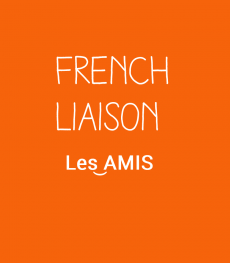
Email: nadege.preston@hotmail.com
Total Article : 82
About Me:Hi I’m Nadege and I study French at the University of Leeds, and I have just completed my third year abroad in Montpellier studying literature and enjoying the sunshine! I love art; painting and being creative, as well as photography and baking. Travelling is my favourite hobby at the moment; experiencing the French language and culture. I hope you enjoy reading some of my articles!

For those of you who are interested in the French language, I will analyse the ways in which a liaison is produced in spoken French. Liaisons are one of the reasons why French pronunciation is so difficult. Ultimately, I am writing this article to guide those of you who are unsure when a liaison would occur. I will try to write it in a simple, clear way – although this may prove difficult!
Liaison can be defined as the pronunciation of the usually silent final consonant of a word, when followed by a word beginning with a vowel or mute h. An example of this is ‘les arbres’ or ‘les hommes’. Normally, in French, consonants at the end of words are latent/mute such as in ‘les’ with the ‘s’. However, when a following word begins with a vowel the consonant is no longer latent, and it therefore becomes non-latent and is pronounced. The ‘s’ changes to a ‘z’ in speech, which links the two words together, making speech flow better.
Liaison consists of three different types. These are liaison obligatoire, facultative and interdite (obligatory, optional and forbidden). Liaison obligatoire means that the liaison is obligatory in all speech styles and without the use of these liaisons, speech would be viewed as incorrect. Consequently, if you are a beginner, I would suggest learning this type; when an obligatory liaison is required. Liaison obligatoire occurs in three contexts. These are when there is a determiner followed by an adjective, noun or pronoun (un ancien..). Also it occurs between a personal pronoun and a verb (vous avez) and lastly, when describing any fixed location, such as ‘Les États-Unis’.
Liaison facultative is an optional liaison, meaning it is varied within different French accents. It occurs in six contexts. It can occur between the forms of the verb ‘to be’ (c’est impossible), between the forms of the verb ‘to have’ and ‘to be’ in the past participle (elle est allée), when using a preposition (sous un abri), after an adverb (pas encore), between a plural noun and a following adjective (des enfants agréables) and with a verb (ils vont à Paris). Preferences vary for individuals and different speech styles, so do not worry too much about this type of liaison, as there are many types to learn! However it is more necessary to know when a liaison is obligatory or forbidden.
Liaison interdite (forbidden) occurs after ‘et’, after a singular noun (sujet interessant), after certain words that end in 2 consonants, in which one is muted (nord est) and also it occurs in front of words starting with a ‘y’ or ‘w’ sound (un oiseau).
The more liaisons are pronounced, the higher a register is being spoken (excluding the forbidden liaisons). In the reading of poetry, all possible liaisons are pronounced, yet in conversational French, some may only simply use the required liaisons.
I hope this mini tutorial has been helpful!
IMAGE URL
https://www.talkinfrench.com/wp-content/uploads/2013/11/french-liaison.png

0 Comment:
Be the first one to comment on this article.